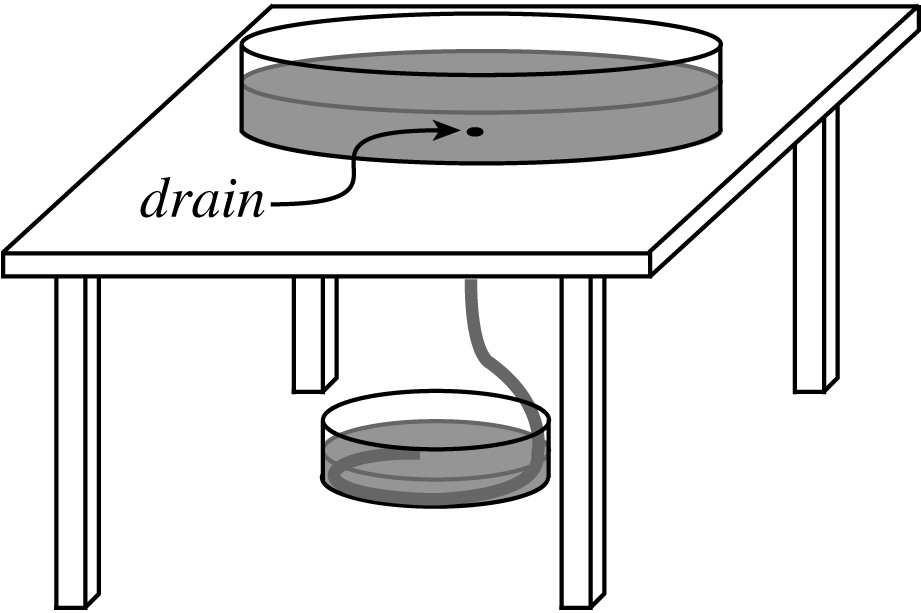GFD LabVI: An experiment in the Earth’s rotation
A classic experiment was carried out by Perrot in 1859 which closely parallels Foucault’s pendulum. He filled a barrel with water (the barrel had a hole in the middle of its base plugged with a cork) and left it standing for two days. He returned and released the plug. As fluid flowed in toward the drain-hole it conserved angular momentum, thus `concentrating’ the rotation of the Earth, and acquired a `spin’ that was cyclonic (in the same sense of rotation as the earth) – the experiment was carried out in Paris in the northern hemisphere.

We will repeat Perrot’s experiment now. The experimental set up is shown in the diagram above. It comprises a leveled cylindrical container of radius 30cm filled to a depth of 10 cm with water (to prevent convection the container is covered with a lid until the time of the experiment). At the center of the cylinder is a small hole, 1.5 mm in diameter. Attached to the hole is a hose (also filled with water and stopped by a rubber bung) which hangs down in to a pail of water.
The water is left for a day or so (why?). When the rubber bung sealing the hose is released at the time of the experiment, water in the cylinder is sucked out in to a pail (the pressure in the hose is less than atmospheric pressure). The cylinder takes about 5 minutes to drain. Toward the end of the draining process a small polystyrene ball – the ball has a cross marked on it to ease observation – is gently floated on the water, and its rate and sense of rotation observed.

According to theory – see 12.003 notes – we expect to see the ball turn in the same sense of rotation as the earth.
This experiment is very tricky – you may have to carry it out many times and do some statistics!